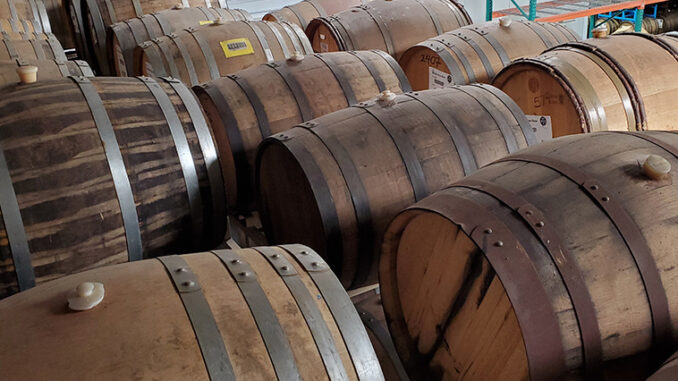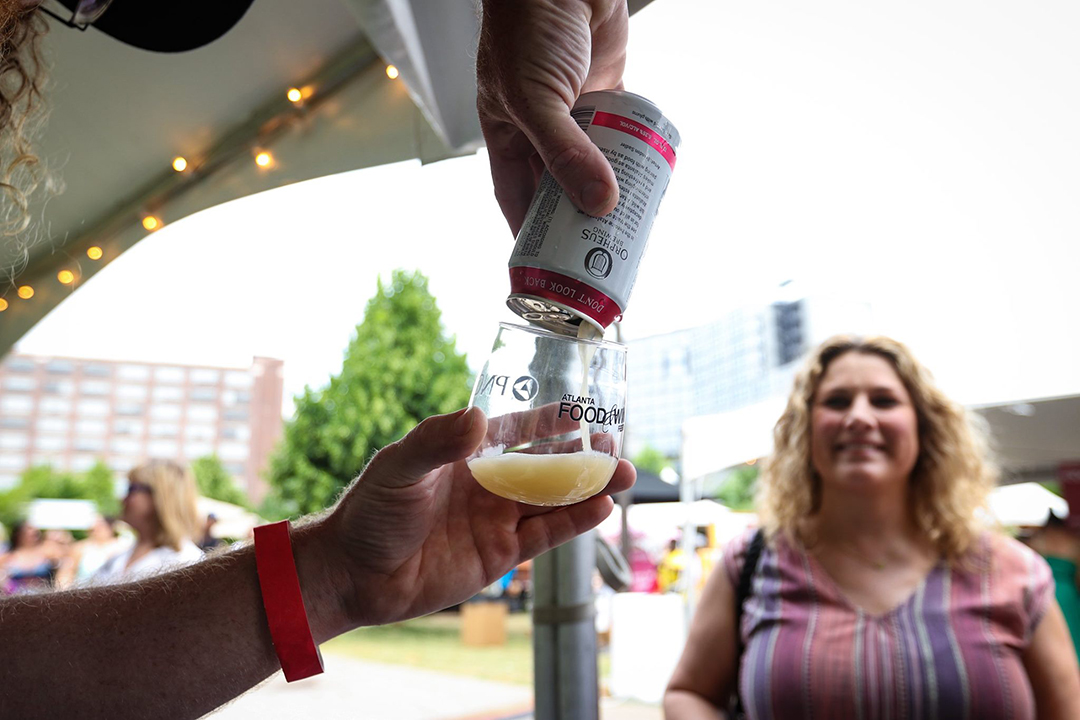
When Kyle Fjalstad reflects on his career in brewing, one of the starkest contrasts he’s seen is how barrel programs look and function depending on the scale of the brewery. As the former Barrel Program Manager at Modern Times Beer and now the Head Brewer at The Original 40 Brewing Company, Fjalstad has navigated the challenges of both a massive operation and a more modest, highly targeted program.
His experience offers a glimpse into how brewery owners and managers can evaluate the true ROI of barrel-aged beer, which can be an increasingly important consideration in today’s tighter craft beer market.
From Hype to Restraint: Shifting the Vision
At Modern Times, the barrel program wasn’t built on spreadsheets but on curiosity and hype. “The goal was always to release unique and interesting beers that served our image and fermentable curiosities even more so than our bottom line,” Fjalstad said. Barrel-aged releases drove excitement, bolstered membership clubs, and elevated the brewery’s reputation.
At The Original 40 Brewing Company, the circumstances are different. Space is limited, reach is smaller, and cash flow pressures are more immediate. Fjalstad is starting small, releasing quarterly batches designed to sell out quickly and build demand rather than flooding the market.
“I feel like selling out of a product can only be a good thing,” he said. “By limiting production, a brewery can sell out much quicker and generate higher demand for future releases.”
Cash Flow Realities
Barrel programs come with unique financial stress points compared to faster-turning beers.
“Depending on maturation time, a brewery may not see a return on investment for a year and a half,” Fjalstad said.
That lag time is compounded by the costs of adjuncts and packaging. At scale, consistency becomes key.
“The easiest way to combat this is consistent filling and emptying of barrels,” he said.
By reaching an operational rhythm: a barrel in, and a barrel out; breweries can avoid massive cash flow crunches once the first wave of investment is absorbed.
Scaling Back: A Hard Lesson from Modern Times
For Modern Times, scaling back wasn’t a choice but a necessity. As the brewery closed locations, its once-thriving membership model weakened, he said.
“Every year we would have to reevaluate the proper amount of volume of barrel-aged product to package,” Fjalstad said.
Key Takeaways
- Start small, sell out, and build demand: Overproduction can erode value; scarcity fuels interest.
- Cash flow matters more than hype: Account for the 12-18 month lag in ROI and plan accordingly.
- Consistency is critical: A barrel-in, barrel-out rhythm prevents gaps in product availability.
- Space is a hidden cost: Don’t ignore the footprint of barrels, especially in smaller available space areas.
- Scaling back isn’t failure: Sometimes reevaluation is the only way to stay sustainable.
At one point, the math was unavoidable: if the sales velocity couldn’t keep up with the maturation timeline, the program’s scale had to shrink. It’s a scenario many breweries face today as demand plateaus or declines.
ROI: More Than Numbers on a Sheet
When evaluating ROI, breweries often overlook the most elusive cost: space.
“The most confounding aspect of an ROI analysis around a barrel-aged product regards the footprint of barrels and rent,” Fjalstad said.
For breweries with unused space, the cost might be negligible. But in tighter quarters, each square foot allocated to barrels has to be justified.
“I don’t think I’ve ever truly had a solid answer on how this should be structured,” he admitted, pointing to the difficulty of building universally applicable financial models for barrel programs.
Margins, Reputation & Long-Term Payoff
Despite the risks, barrel-aged beers can deliver strong margins and powerful brand equity. “Margins can be spectacular on barrel-aged products,” Fjalstad said. Beyond profitability, the products connect breweries with dedicated beer enthusiasts and can be an asset for your brand’s reputation and long-term positioning.
At a smaller scale, the goal is to balance that upside with discipline, avoiding the trap of tying up too much money and space in beer that may take years to sell.
For Fjalstad, the contrast between Modern Times and The Original 40 Brewing shows that there isn’t a single blueprint for barrel success. Instead, the right program depends on a brewery’s scale, cash flow, and market position.
“Be prepared for large upfront costs until you can release your first product and build a plan that allows for consistent emptying and filling of barrels,” he said. “Beyond that, keep it measured. The ability to interest more devout beer drinkers is real, but only if you can sustain the investment long enough to reap the benefits.”







Be the first to comment